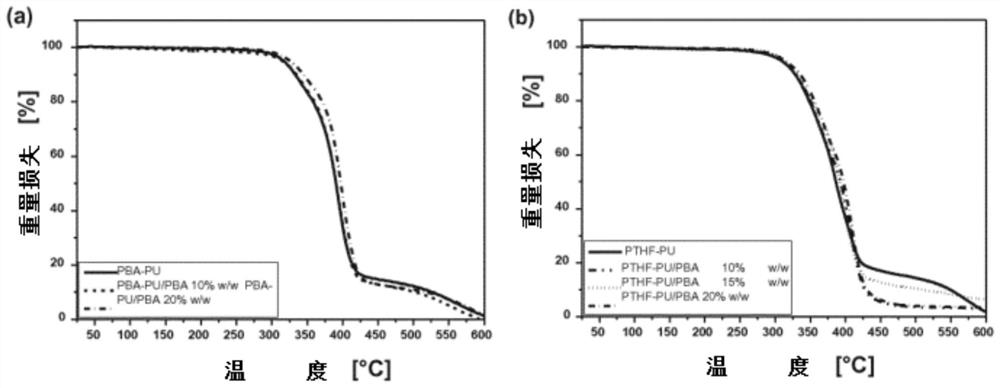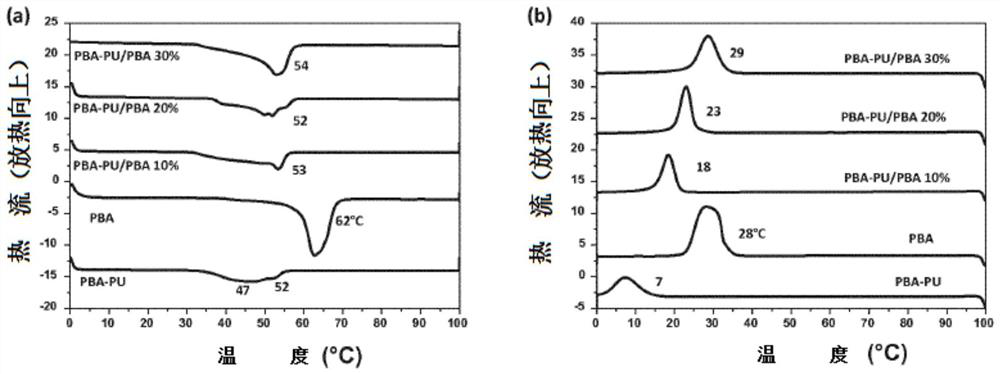Shape memory polymers
A polymer, thermoplastic polymer technology, used in sensors, hearing aids, electrical components, etc., to solve problems such as poor recovery, low fixation rate, and limitations
- Summary
- Abstract
- Description
- Claims
- Application Information
AI Technical Summary
Problems solved by technology
Method used
Image
Examples
Embodiment Construction
[0058] Material. Based on a hard segment composed of 4,4-methylenebis(phenylisocyanate) (4,4-methylenebis(phenylisocyanate), MDI) and 1,4-butanediol (BD) as a chain extender and poly 1 , 4-butadiene adipate (PBA) and polytetrahydrofuran (PTHF) soft / transition segment PBA-PU and PTHF-PU were developed by Covestro Deutschland AG and Bayer MaterialScience (now Covestro Xtron) are offered as Desmopan DP 2795A and Texin 285 respectively. Poly-1,4-butadiene adipate (PBA) (M w =12000 g / mol) was purchased from Sigma Aldrich (SigmaAldrich) or from Best of Chemicals from BOC Sciences, Shirley, USA, Shirley, USA, and polycaprolactone (PCL, M w = 14000 g / mol, M n = 12000 g / mol) was purchased from Sigma-Aldrich. Acetylated PBA was prepared by reacting PBA with acetyl chloride in tetrahydrofuran / pyrimidine.
[0059] Blends of PBA-PU or PTHF-PU with PBA or AcPBA were prepared. PBA-PU and PTHF-PU were dried in an oven at 70° C. for 3 hours before preparing the blends. The PBA-PU is mel...
PUM
| Property | Measurement | Unit |
|---|---|---|
| crystallization temperature | aaaaa | aaaaa |
| melting point | aaaaa | aaaaa |
| melting point | aaaaa | aaaaa |
Abstract
Description
Claims
Application Information
 Login to View More
Login to View More - R&D
- Intellectual Property
- Life Sciences
- Materials
- Tech Scout
- Unparalleled Data Quality
- Higher Quality Content
- 60% Fewer Hallucinations
Browse by: Latest US Patents, China's latest patents, Technical Efficacy Thesaurus, Application Domain, Technology Topic, Popular Technical Reports.
© 2025 PatSnap. All rights reserved.Legal|Privacy policy|Modern Slavery Act Transparency Statement|Sitemap|About US| Contact US: help@patsnap.com



